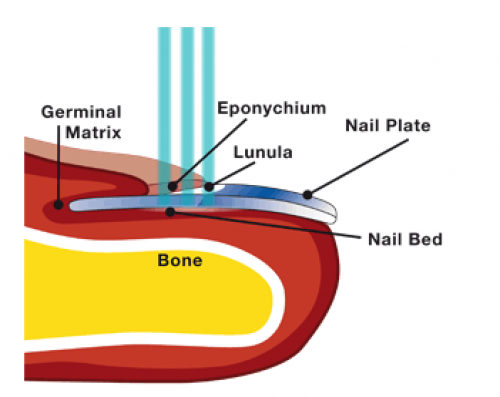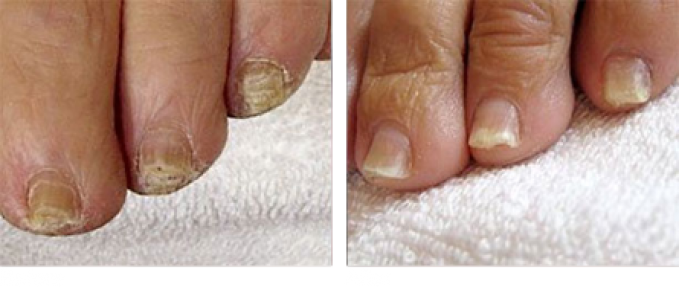Fungal nail infections
Fungal nail infections pose a global health threat, with over 50 million people suffering from the contagious condition last year. Treating fungal nails is simple and new techniques are effective.
What is a fungal nail infection?
Fungal nail infection of the toenails or fingernails is caused by a fungal microbe that invades the nail bed. Fungal nail infection is also termed onychomycosis and tinea unguium. This condition causes fingernails or toenails to thicken, discolour, disfigure, and split. At first, onychomycosis appears to be only a cosmetic concern. Without treating fungal nails, however, the toenails can become so thick that they press against the inside of the shoes, causing pressure, irritation, and pain.
What causes fungal nail infections?
Half of all nail disorders are caused by onychomycosis, and it is the most common nail disease in adults. Toenails are much more likely to be infected than fingernails. The incidence of onychomycosis has been increasing and is associated with diabetes, a suppressed immune system, and increasing age. Adults, especially the elderly, are more likely to have onychomycosis than children.
- Athlete\’s foot is a fungal skin infection which can spread to affect toenails. The risk of developing athlete\’s foot is increased by having hot sweaty feet.
- Candida is a fungal yeast infection which can affect the skin around the fingernails before affecting the nails.
- Health conditions, including diabetes or psoriasis, may increase the risk of fungal nail infections as they can damage the nail or skin allowing infections to develop.
- Biting the nails and use of artificial nails can increase the risk of fungal nail infections.
- The risk also increases with age and among smokers.

Who is affected?
This is an increasingly common nail disorder in adults the risk of having this nail disease increases with age and through underlying nail disease. It’s common to seek over the counter ways of treating fungal nails, but clinic treatments are more effective.
How severe can a fungal nail infection become?
Fungal nail infections are not usually painful at first, but left untreated the infection may spread and could cause complications, which include cellulitis skin infection, or osteomyelitis bone infection. If the infection becomes painful, shoes may be uncomfortable to wear and tasks using the hands such as writing may hurt.

How do I prepare for treatment?
Treating fungal nails is simple, but ensure all nail varnish is removed and nails are clean.
What can I expect from the treatment?
Some warmth will be felt when treating fungal nails. The treatment will last at least a few minutes per nail and you will feel an increase in heat within the nail being treated.
How does it work?
Using a short pulsed Nd:Yag laser, we increase the temperature underneath the nail bed which kills the fungi. Depending on the severity of the infection you may require a course of 3 or more treatments. In mild cases one treatment will be sufficient. In the below picture you can see the laser (in blue) being directed down onto the nail bed through the nail itself.
How often would I have the treatment?
For best results it is recommended that one treatment every few weeks.
How many treatments will I need?
This varies from person to person. In mild cases one treatment could be enough.
PRICING
TREATMENT
Nail Fungi ~ 1-5 Nails ~ 15minutes
Nail Fungi ~ 6+ Nails ~ 30minutes
PER SESSION
£80.00
£120.00
